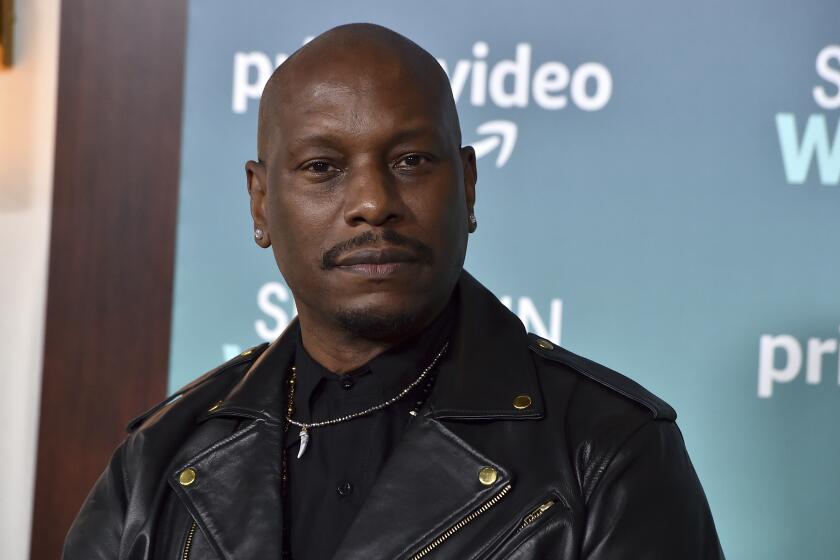The bold and the beautiful
The Civil War epic “Cold Mountain” opens with a stunning vision of hell. It’s 1864, Petersburg, Virginia, and Union soldiers have tunneled into the ground to lay explosives beneath Confederate lines. When the charges ignite, it’s as if the very Earth were shattering -- men are blown skyward then fall straight into their graves, buried dead and alive under dirt.
Director Anthony Minghella takes us so close to the mud, the blood and the delirium of this nightmare that while watching the movie I involuntarily raised one of my hands as if to ward off its impact. The palpability of the violence, its uncomfortable closeness -- there’s no place on screen, no pocket of calm, you can escape to -- is fundamentally different from the violence in much contemporary film. Modern cinema has made us comfortable with movie death, mostly by turning violence into a sanitized package of fun. In this sequence and for stretches in Minghella’s adaptation of Charles Frazier’s acclaimed novel, the director allows you to feel the heaviness of death, letting it cast a pall over the story.
There’s a strange quiet after the explosion, but it’s quickly filled with the rising roar of men charging into battle. The Union regiment, which had been lying in wait, rushes toward the Confederate defenses, but instead of descending on a weakened enemy they run straight into a towering wall of dirt. Crushed together -- the battle is based an actual episode during the siege of Petersburg -- the Union soldiers scramble, but there’s no room to run. The Confederate soldiers giddily shout, “It’s a turkey shoot,” and jump into the pit as if into a swimming hole, launching an attack that is shocking for its frenzied violence. At the lip of the crater, Inman -- the Confederate soldier whose journey pushes the story forward and who, through the soulful performance of Jude Law, gives the film its emotional power -- pauses, then leaps into the void.
How Inman crawls out of that hole and makes his long difficult march back home to the mountain of the title composes the better and gripping half of Minghella’s film. As in Frazier’s book, the other half of the story principally involves Ada Monroe (Nicole Kidman), the only daughter of a minister (Donald Sutherland), and the rough-hewn mountain woman, Ruby (Renee Zellweger), who comes to her rescue. Before the war, Ada and her father had relocated from Charleston to Appalachian North Carolina for reasons of paternal health. There in an agrarian haven dotted with small farms and edged with wooded mountains, Ada and Inman had circled each other with bashful longing, rehearsing a love story that, once the war erupts, will be sustained only through wisps of memory and the rare letter.
Inspired by one of Frazier’s forefathers and the author’s fondness for those early American pragmatists Emerson and Thoreau, Inman is “Cold Mountain’s” most vivid character on the page and on the screen. Frazier’s self-consciously lush language (like Cormac McCarthy, another influence, he sprinkles his prose with rusty words) sounds most natural coming from Inman, one of literature’s deceptively simple men. And because his journey takes him not just within himself, but across the ravaged land, Inman bears close witness to the changes brought by the war. If Ada, a privileged white woman, represents the South’s ruling class -- “I know how to arrange flowers,” she laments, “but not how to grow them” -- Inman embodies a nostalgic vision of a man whose worth is measured by his closeness to nature, not his distance.
An unabashed romantic, Minghella takes to Ada and Inman’s love story with appreciable feeling, but the irony of “Cold Mountain” is that it’s the director’s grasp of violent action that proves his greatest cinematic gift. The violence in his adaptation -- in the sweep of battle and its close detail -- is uncompromising. There’s a fury to these scenes that comes as something of a shock, but Minghella has always had a toughness that tends to be forgotten amid the surging violins and billowing blondness of his most famous film, “The English Patient.” That steeliness, however, was very much in evidence in his underrated adaptation of Patricia Highsmith’s “The Talented Mr. Ripley,” and it’s evident too in “Cold Mountain” in a series of bloody encounters -- including a harrowing scene with Natalie Portman -- that plunge us into Inman’s nightmare.
“Cold Mountain” is so very good in these passages that it’s disappointing that the whole doesn’t rise to the occasion of Minghella’s ambitions and talent. There are not one, but two wars raging inside this adaptation: one between the North and the South, and another, more calamitous war between art and middlebrow entertainment.
On one side of that war Inman embarks on a Homeric journey that brings out Minghella’s eye for pictorial beauty and well-chosen symbols and gift for guiding actors deep into themselves. Law’s startling transformation, from beautiful, serious youth to ghost, gives the character the weight of tragedy -- the actor carries a world of sadness in his eyes. (In smaller roles, Ray Winstone and Charlie Hunnam, both unrecognizable, are excellent.) But Minghella is also an entertainer whose hothouse romanticism easily slips into kitsch, and he often seems anxious to relieve the gloom. He lets Kidman coast on smiles and technique, and permits Philip Seymour Hoffman to overstay his welcome as a preacher with an unaccountably British accent. Like Hoffman, Zellweger principally functions as broad comic relief. Her tribute to Doris Day in “Calamity Jane” is certainly something.
It’s by hewing so close to the novel’s broad outlines and pumping up the romance that Minghella works himself into a structural corner he only escapes at the end. Ada and Inman’s affair has barely begun before it’s stopped in its tracks by the war. Minghella resorts to some of the same techniques he used in “The English Patient” to bridge the separated lovers, using sound to slide between the past and present tense and, in this case, Ada’s letters, which Kidman reads in breathy voice-over. Minghella tries to forge an epic romance on a few shy looks, one swoony kiss and trembling narration (Frazier fills the gap between the lovers with their interior voices), but because Ada and Inman exist apart for most of the film, there’s something diffuse and unbelievable about their connection.
Whether because of a failure of nerve or imagination, Minghella makes a calamitous error by turning this bracing story about white Southerners caught in the cataclysm of war and on the brink of profound change into a gauzy romance. The relentless crosscutting between Inman and Ada dilutes the power of each character’s story and has the unfortunate effect, particularly the closer he gets to home, of making the movie feel like an extended version of one of those slow-motion runs lovers make toward each other down beaches. (The clincher is very sexy, though only Law looks suitably exhausted.) For all intents and purposes, the romance could unfold anywhere -- on a beach or indeed Romania, the country where the film was shot. Given Minghella’s selective verisimilitude in regard to enslaved blacks, it might as well have been.
The slaves are there in the film -- silent, distant, stooping over fields and melting into the landscape -- and it’s impossible not to notice just how little they figure into Minghella’s adaptation. You don’t need to read the novel to notice their absence, although the book clarifies why the omission hurts the film. Frazier’s multiple black characters add meaning to his story, not just atmosphere, because the lives of slaves were inseparable from the whites like Ada who kept them and the whites like Inman who ignored their anguish. In some respects, Minghella is Frazier’s equal as a storyteller, but he lacks the author’s will to express the ugly truth of his characters along with their beauty. There is something too perfect about Minghella’s love and, however brutal, something too civil about his war.
*
‘Cold Mountain’
MPAA rating: R for violence and sexuality
Times guidelines: Extremely intense war violence, animal butchery, adult sexuality and nudity
Jude Law...Inman
Nicole Kidman...Ada
Renee Zellweger...Ruby
Brendan Gleeson...Stobrod
Philip Seymour Hoffman...Veasey
Miramax Films presents a Mirage Enterprises/Bona Fide production, released by Miramax films. Director Anthony Minghella. Screenplay Anthony Minghella. Based on the Charles Frazier novel. Producers Sydney Pollack, William Horberg, Albert Berger, Ron Yerxa. Director of photography John Seale. Production designer Dante Ferretti. Editor Walter Murch. Costume designers Ann Roth, Carol Poggioli. Music Gabriel Yared. Running time: 2 hours, 33 minutes.
In general release.
More to Read
Only good movies
Get the Indie Focus newsletter, Mark Olsen's weekly guide to the world of cinema.
You may occasionally receive promotional content from the Los Angeles Times.










